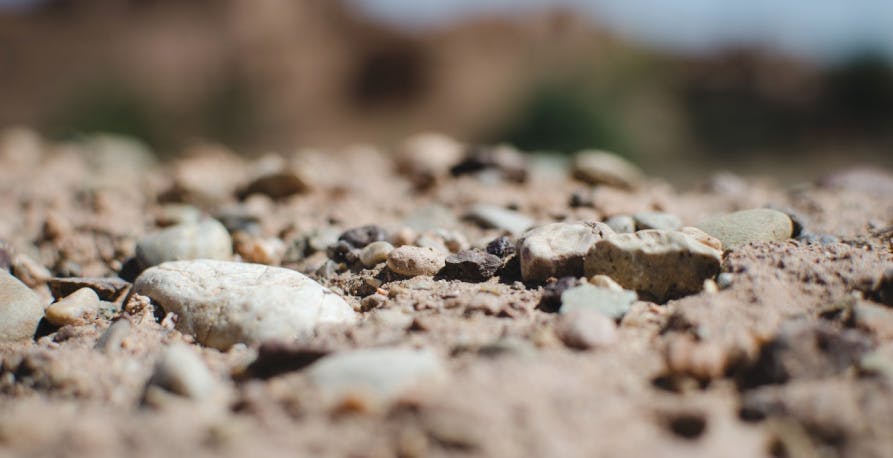ESG / CSR
Industries
Desertification: Definition, Causes, and Impacts



Desertification is a growing problem in our world, due to a mix of climate change and poor land management. In this article we will define desertification, its causes, its impacts, and what can be done to stop it.
What is desertification?
For such a transition to be considered desertification, the land must:
- Undergo land degradation – land’s loss of current or future productive capabilities.
- Be dryland – land in an arid, semi-arid, or dry sub-humid climate.
In dry climates, soil moisture tends to correlate with short-term rainfall patterns – the wetter the soil, the higher likelihood of rain the next day. So, a wet season is likelier to be wetter if there are more plants in a dryland to hold the moisture. But if over time more and more plants die from desertification, it can be challenging to stop the cycle.
Why is desertification important?
Desertification is a serious environmental concern. It has significant consequences for both ecosystems and human populations.
Dryland makes up about 46% of all the land on earth, an area home to 3 billion people. There are six countries that have 99% or more of their land classified as dryland.
Desertification is a global problem - 17 countries, which are home to nearly 2 billion people, have highly stressed aquifers. That means water, food, and land for a quarter of the world’s population is at serious risk.
If desertification and climate change are not taken seriously, it is likely that millions of people will choose to leave their homes for areas with more consistent access to food and water.
What are the causes of desertification?
Desertification is caused by a multitude factors that often compound each other. Variations in the climate play a part in the phenomenon, as do human activities.
Urbanization and improper agriculture and land management practices drive factors that cause desertification, including:
- Deforestation
- Forest fires
- Pesticide use
- Excessive irrigation
- Overgrazing
Drylands, by definition, get little rain. Therefore, the groundwater supply of drylands is typically a fragile resource. As droughts intensify, lengthen, and become more common with climate change, the aquifers holding the groundwater will shrink year by year, even when they are refilled by rains.

Climate change intensifying droughts
Since the early 1900s, global drought has been steadily increasing due to greenhouse gas emissions by humans.
The addition of more greenhouse gases to our atmosphere has been steadily warming our planet and contributing to climate change. Warmer temperatures make more water evaporate from earth’s surface. This means plants have a harder time holding on to moisture and staying hydrated in arid areas.
Poor land management
When drought-affected areas are well managed, the land can rebound when rain inevitably comes.
But drylands that are poorly managed during drought have a much harder time recovering to pre drought stability. Heavy use of groundwater for irrigation, drinking water, putting out forest fires, or urbanization needs can limit the water available for plants to rely on during drought.
Two other big factors of poor land management are overgrazing of cattle and excessive use of pesticides. These common practices contribute to desertification by deteriorating soil health and texture.
Overpopulation can also lead to improper land management. It creates greater demands on the soil for food than it can sustainably give. Overuse can easily trigger erosion of quality soil, which will put more stress on nearby land to compensate for this loss.

Desertification, impacts
One of the main impacts of desertification is biodiversity loss. As dry land ecosystems get drier and more inhospitable, fewer plants and animals can adapt and survive.
Forest fires and low soil quality, as we have discussed, are also common consequences of desertification. An area becoming more arid makes it more fire friendly. And as soil deteriorates with erosion, it cannot hold as much moisture, further adding to forest fire potential.
Habitat loss is inevitable when an ecosystem is ravaged by forest fires, depleting soil, increased temperatures and more sparce precipitation. Animals and plants are forced to migrate but finding new homes can be challenging – it depends on environmental conditions and competition for resources.
Impact on humans
Of course, land becoming desert makes the area less hospitable to humans as well.
The productivity of crops and livestock tends to go down due to desertification. Wildfires are more likely to spark as drylands become drier, threatening humans themselves, their crops, and their livestock.
When the rare rains eventually do come, poor soil conditions can lead to flooding and polluted water sources, compounding water stress on communities.
You may be wondering where desertification is happening or where it is likely to occur.
As we know, desertification happens only in areas that are already particularly dry. While not all drylands are near a desert, desertification is most likely to happen on the shoulder of the desert – where precipitation is as or more sparce than on the dryland itself.
Desertification is creeping its way across California
The Golden State, as an agricultural capital of the U.S., is particularly thirsty for water. Unfortunately, a good chunk of California has experienced drought for much of the last decade.
It’s fair to say that during this period, the land has not been managed very well - parts of the state’s central valley have sunk as much as two feet each year due to excessive groundwater use.
Africa
Two thirds of the continent of Africa is currently classified as either dryland or desert. That was not always the case – but with desertification increasing, transitionary land between desert and non-desert has become less and less habitable.
For example, the Sahel, a long band of dryland separating the Sahara Desert from the humid savannas to the South, becomes more barren each year. Desertification happens there partly due to growing populations’ greater demands on the land for sustenance. Also, the cattle commonly overeat the limited supply of grass, leaving the soil exposed to erosion when rainfall comes.
However, there is a movement to replant native Acacia trees to the region. They will help hold the topsoil in place and keep the Sahara from encroaching further. The trees have also been helping communities of the Sahel economically, giving them more community support than just ecological.
What can be done to stop or reverse desertification?
Planting native trees in dryland areas is a great solution to keeping desertification at bay and reverse what has already happened. Flora native to drylands tend to be drought-resistant and can hold onto soil, limiting erosion. And as trees do, they can help limit global warming by removing carbon from the atmosphere.
Another way to limit desertification is by protecting windy areas. We can do this by building a wind fence or planting an ecological border, which will be key to limiting soil erosion.
What about Greenly?
Contact Greenly if your company needs help measuring and offsetting its carbon emissions. Greenly will give you expert analysis and advice every step of the way towards minimizing your impact on climate change.



